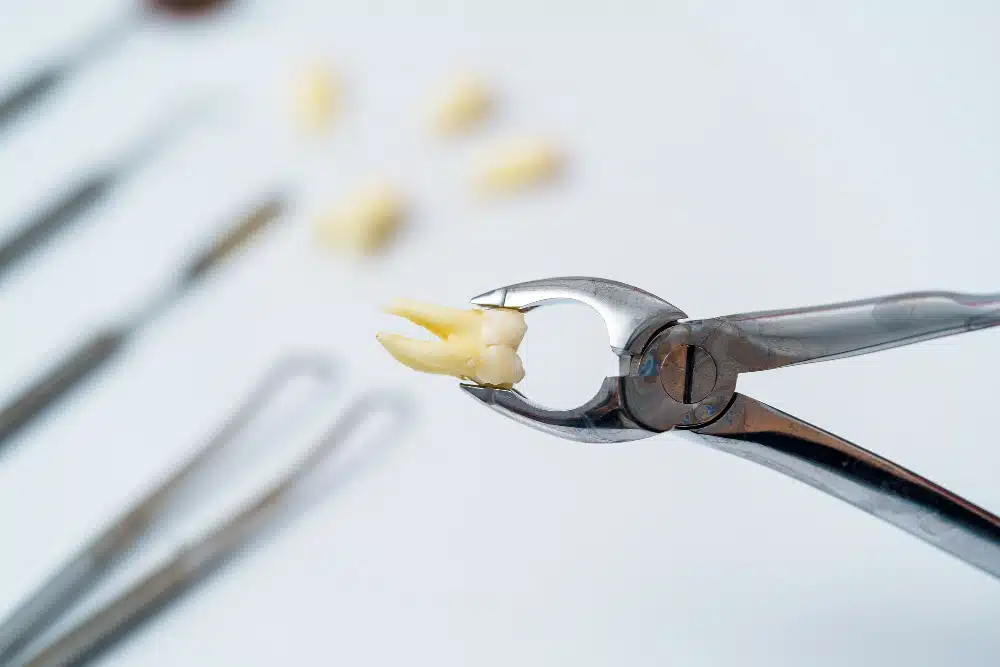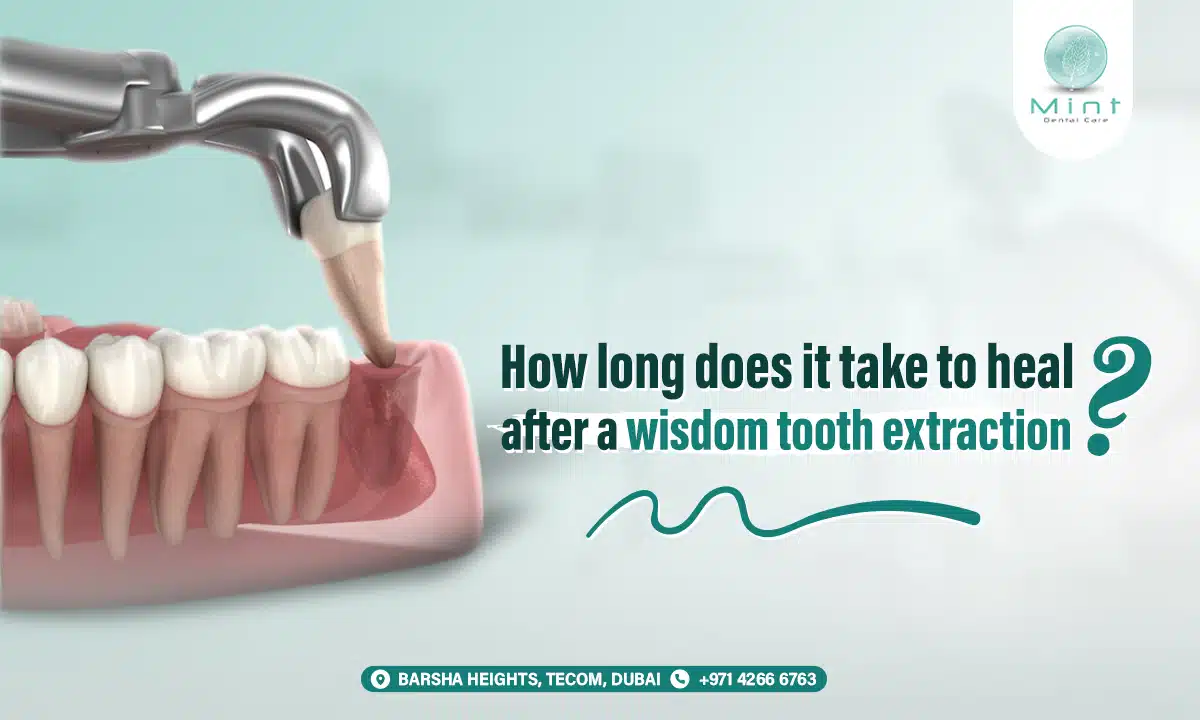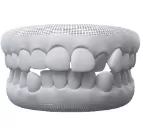Tooth extraction is a common dental procedure, but the recovery process requires careful attention to ensure proper healing and avoid complications. One of the most critical aspects of recovery is your diet. Choosing the right foods not only minimizes discomfort but also supports healing. In this comprehensive guide, we’ll explore the best foods to eat after a tooth extraction, why they’re beneficial, and how to maintain optimal oral health during recovery.
If you’re in Dubai, clinics like Mint Dental Care offer expert guidance on post-extraction care, ensuring a smooth and comfortable healing journey.
Why Is Diet Important After a Tooth Extraction?
After a tooth extraction, your mouth is in a sensitive state. The extraction site needs time to heal, and the formation of a blood clot is crucial to prevent complications such as dry socket. Your diet plays a vital role in protecting the extraction site and promoting recovery.
What happens if you eat the wrong foods?
Eating hard, crunchy, or sticky foods can dislodge the blood clot, leading to pain, bleeding, and delayed healing. These foods can also irritate the sensitive tissues around the extraction site, increasing the risk of infection.
How does the right diet aid recovery?
Soft and nutrient-rich foods help protect the extraction site while providing the essential vitamins and minerals your body needs for tissue repair and immune support. They’re also easier to chew, reducing strain on your jaw and minimizing discomfort.
What Are the Best Foods to Eat After a Tooth Extraction?
The best post-extraction foods are soft, smooth, and easy to consume. Here’s a breakdown of the top options to include in your recovery diet:
1. Soups and Broths
Soups and broths are a staple of post-extraction diets. They’re warm (but not hot), packed with nutrients, and require minimal chewing. Options like chicken broth, vegetable soup, or pureed lentil soup are excellent choices.
Why are soups ideal for recovery?
- They keep you hydrated and provide essential minerals.
- Pureed soups ensure no large chunks irritate the extraction site.
Pro Tip: Avoid soups with hard ingredients like croutons or large vegetable pieces.
2. Mashed Potatoes and Sweet Potatoes
Mashed potatoes are a go-to comfort food, making them an excellent option after a tooth extraction. Their smooth texture makes them easy to consume without putting pressure on the extraction site. Sweet potatoes, on the other hand, are not only delicious but also packed with essential vitamins that boost the recovery process.
What makes potatoes a great choice?
- Soft and Easy to Eat: The creamy consistency of mashed potatoes minimizes the risk of irritating the sensitive extraction area.
- Nutrient-Rich: Sweet potatoes are a powerhouse of vitamins A and C, which promote tissue repair and strengthen your immune system, aiding in faster healing.
- Energy Boost: Potatoes are a great source of carbohydrates, providing the energy your body needs during recovery. This is especially important as your body focuses on healing the surgical site.
How to prepare them for maximum benefit?
- Use minimal butter, cream, or salt to avoid irritating the gums or causing discomfort.
- Ensure the potatoes are fully mashed and smooth, with no chunks that could disrupt the healing area.
- Let them cool to a lukewarm temperature before consuming to prevent burning or irritation.

Can you enhance their healing benefits?
Yes! You can add soft, nutrient-dense ingredients like blended spinach, mashed carrots, or a drizzle of olive oil for extra flavor and nutritional value. These additions provide antioxidants and anti-inflammatory benefits, further supporting the healing process.
Pro Tip:
Prepare smaller portions to ensure you’re eating fresh, warm (not hot) servings. Avoid reheating them excessively, as overly hot food can irritate the sensitive gum tissue.
With their ease of preparation, nutritional benefits, and comfort factor, mashed potatoes and sweet potatoes are an ideal choice for your post-extraction recovery diet.
3. Yogurt and Smoothies
Yogurt is rich in probiotics, which support gut health and boost immunity. Smoothies allow you to blend fruits, vegetables, and proteins into a nutrient-packed meal.
Why are yogurt and smoothies beneficial?
- Their creamy texture is gentle on the extraction site.
- Smoothies can be customized to include healing-boosting ingredients like bananas, spinach, and protein powder.
Pro Tip: Skip the straw when drinking smoothies to avoid dislodging the blood clot.
4. Scrambled Eggs
Eggs are an excellent source of protein, which is essential for tissue repair. Scrambled eggs are soft, easy to chew, and gentle on your mouth.
Why include eggs in your recovery diet?
- They’re packed with high-quality protein.
- They’re quick to prepare and can be seasoned lightly for flavor.
Pro Tip: Opt for plain scrambled eggs and avoid adding spices or sauces that may irritate the gums.
5. Oatmeal and Porridge
Oatmeal and porridge are excellent options to include in your post-extraction recovery diet once the initial swelling and tenderness subside. Their soft, easily digestible texture makes them gentle on the gums, while their nutritional benefits provide the energy your body needs to heal.
Why is oatmeal a good choice?
- Soft and Gentle Texture: Oatmeal and porridge are easy to consume without causing irritation to the sensitive extraction site.
- Rich in Nutrients: Packed with fiber, vitamins, and minerals, oatmeal promotes overall health and keeps you feeling full for longer.
- Sustained Energy: The complex carbohydrates in oats provide a steady release of energy, which is crucial during the recovery period when your body is working hard to heal.
How to prepare oatmeal for post-extraction recovery?
- Go for a Smooth Consistency: Cook oatmeal until it’s soft and creamy to avoid any hard pieces that could irritate the gums.
- Add Gentle Sweeteners: Mix in honey or mashed fruits like bananas for natural sweetness and added nutrients. Avoid crunchy toppings like nuts or granola.
- Serve Warm, Not Hot: Allow the oatmeal to cool to a lukewarm temperature to prevent burning or aggravating the healing site.
Can oatmeal support healing?
Yes! Oats are a great source of B vitamins and iron, which support energy production and cell repair. When paired with ingredients like mashed berries or a touch of cinnamon, oatmeal becomes a flavorful and nutrient-packed meal that aids recovery.
Pro Tip:
Opt for steel-cut oats or traditional rolled oats rather than instant oatmeal, as they retain more nutrients. Blend the oats before cooking for an even smoother texture.
By incorporating oatmeal and porridge into your diet, you’ll enjoy a comforting, versatile, and health-boosting meal that aligns perfectly with your recovery needs.
What Foods Should You Avoid After a Tooth Extraction?
While soft foods are encouraged, there are several types of foods you should steer clear of during recovery.
1. Hard, Crunchy, or Sticky Foods
Foods like chips, popcorn, and candy can irritate the extraction site and dislodge the blood clot.
Why are these foods problematic?
- They require excessive chewing, which can strain the jaw.
- Their small particles can become lodged in the wound.
2. Spicy and Acidic Foods
Spicy foods can cause irritation, while acidic foods like citrus fruits may sting the sensitive area.
What are the risks of consuming these foods?
- They can delay healing by irritating the gums.
- They increase discomfort during eating.

How Long Should You Follow a Soft Food Diet?
The duration of a soft food diet varies depending on the complexity of the extraction and individual healing times.
When can you reintroduce solid foods?
For simple extractions, you may begin eating soft solids within 3-5 days. For surgical extractions or impacted wisdom teeth, it might take up to two weeks.
What signs indicate you’re ready for solid foods?
- Reduced swelling and pain.
- No discomfort when chewing softer foods.
At Mint Dental Care, we recommend a follow-up appointment to assess healing and provide personalized dietary advice.
What Are the Signs of a Healthy Recovery?
Healing from a tooth extraction involves specific milestones. Understanding these signs can help you track your progress and identify potential issues.
What does normal healing look like?
- Mild swelling and discomfort that subsides within a few days.
- Formation of a blood clot at the extraction site.
- Gradual return to normal jaw movement and chewing.
When should you consult your dentist?
If you experience severe pain, excessive bleeding, or signs of infection like fever or pus, contact your dentist immediately. Mint Dental Care provides 24/7 support for post-extraction concerns.
How Can Mint Dental Care in Dubai Support Your Recovery?
At Mint Dental Care, we prioritize your comfort and healing during every step of your dental journey. Our expert team offers personalized advice, including dietary recommendations, to ensure a smooth recovery after tooth extraction.
What makes Mint Dental Care stand out?
- Expert Guidance: We provide clear instructions tailored to your needs.
- Modern Facilities: Our state-of-the-art clinic ensures a comfortable experience.
- Comprehensive Care: From consultation to recovery, we’re with you every step of the way.
Eating the right foods after a tooth extraction can significantly impact your recovery. Soft, nutrient-rich options like soups, yogurt, and mashed potatoes provide the necessary nourishment while protecting the sensitive extraction site. Avoiding hard, crunchy, and spicy foods ensures a smoother healing process.
If you’re preparing for a tooth extraction or have questions about recovery, Mint Dental Care in Dubai is here to help. Schedule your consultation today and take the first step toward a healthy, confident smile!















